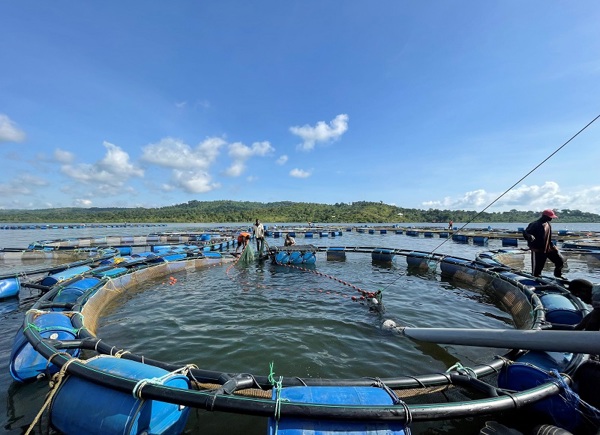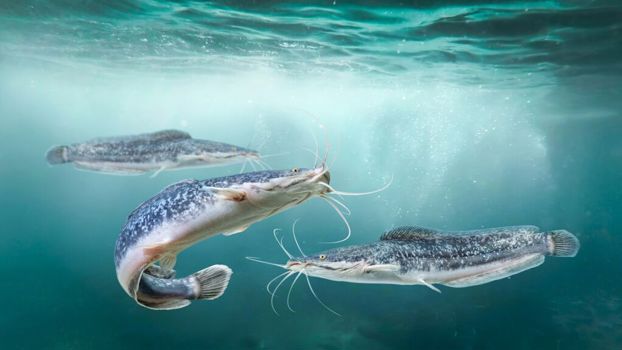 Bagre
Bagre
O bagre africano (Clarias gariepinus) é um peixe carnívoro forte e robusto. Com um sistema branquial rudimentar, ele pode sobreviver a níveis extremamente baixos de oxigênio dissolvido na água. Essa capacidade de sobreviver sob hipoxia extrema por curtos períodos de tempo não significa que se possam negligenciar as condições e a gestão. Estes são importantes para otimizar os seus rendimentos.

Ração altamente digestível para um crescimento eficaz
A ração para bagres possui suas próprias exigências nutricionais para otimizar o crescimento deste peixe robusto. Sua natureza carnívora se traduz em uma dieta rica e altamente digestível, adaptada para atender às necessidades em cada fase de seu ciclo de produção. Combinada com um regime de alimentação e conselhos práticos projetados para maximizar a eficiência, você pode produzir a proteína de peixe de forma muito eficaz. Nossa presença local ativa e as discussões com os produtores de bagre nos permitem estar na vanguarda de rações de qualidade e do melhor desempenho.

Perguntas frequentes
Temos as respostas às suas questões
When your feed contains too much soybean meal your fish can develop an inflammatory response and irritation in the intestine, which results in reduced growth performance. Check with your Koudijs specialist what the recommended maximum levels are for your species. Also at Koudijs we have solutions in the form of highly digestible protein products to ensure maximum growth and health of your fish.
As the density of your production area increases so should the number of feeding points grow. Why? Movement triggers fish feeding behaviour. In a large production area with one feeding point many fish will be too late in reaching this feeding point. All the feed will be eaten by a small percentage of fish.
More feeding points means fish have equal opportunity to eat over entire production area. This improves growth homogeneity and your fish will all be of the right size at harvesting time.
Overfeeding leads to feed waste, which costs money and pollutes water. Polluted water leads to algal blooms, ammonia build up and low oxygen in the mornings. These are all bad for your fish!
Accurate feeding amounts can be achieved through regular sampling of fish weight and using this weight to calculate from feeding charts the correct amount of feed to be given daily. Also an experienced technician can see from the fish feeding behaviour if fish are hungry of not.
Keeping track of basic information of your farms production will improve your farm performance.
Regular sampling of your fish will allow you to keep track of the average fish size in your pond. With fish size you can calculate Weight Gain, Growth Rates, Average Daily Gain (ADG), Feed Conversion Ratios (FCR), etc. and evaluate progress and compare results.
Knowing the actual weight of your fish during the production cycle is important to calculate feeding rations, correct size of feed pellets and the number of times your fish need to be fed per day.
Keeping track of basic information of your farms production will improve your farm performance.
For example different water parameters can influence fish in many ways such as temperature on metabolic rates, dissolved oxygen on fish activity, pH on fish stress, algae on pH and dissolved oxygen, and ammonia on fish health. Daily checks of water parameters will help to determine the amount of feed required more accurately and let you know the condition of you fish.

